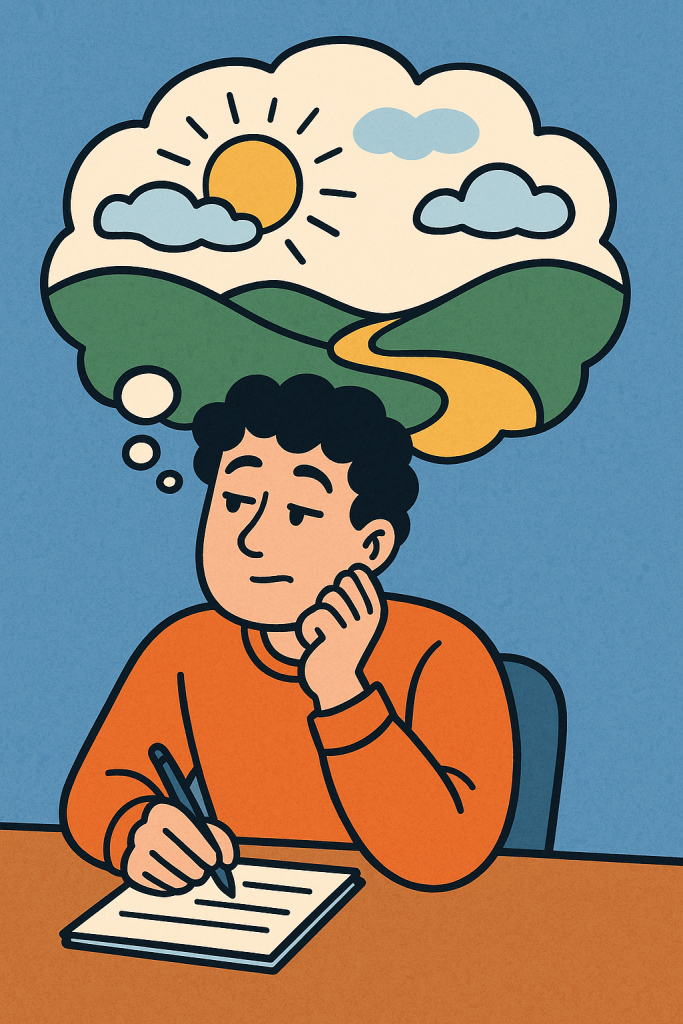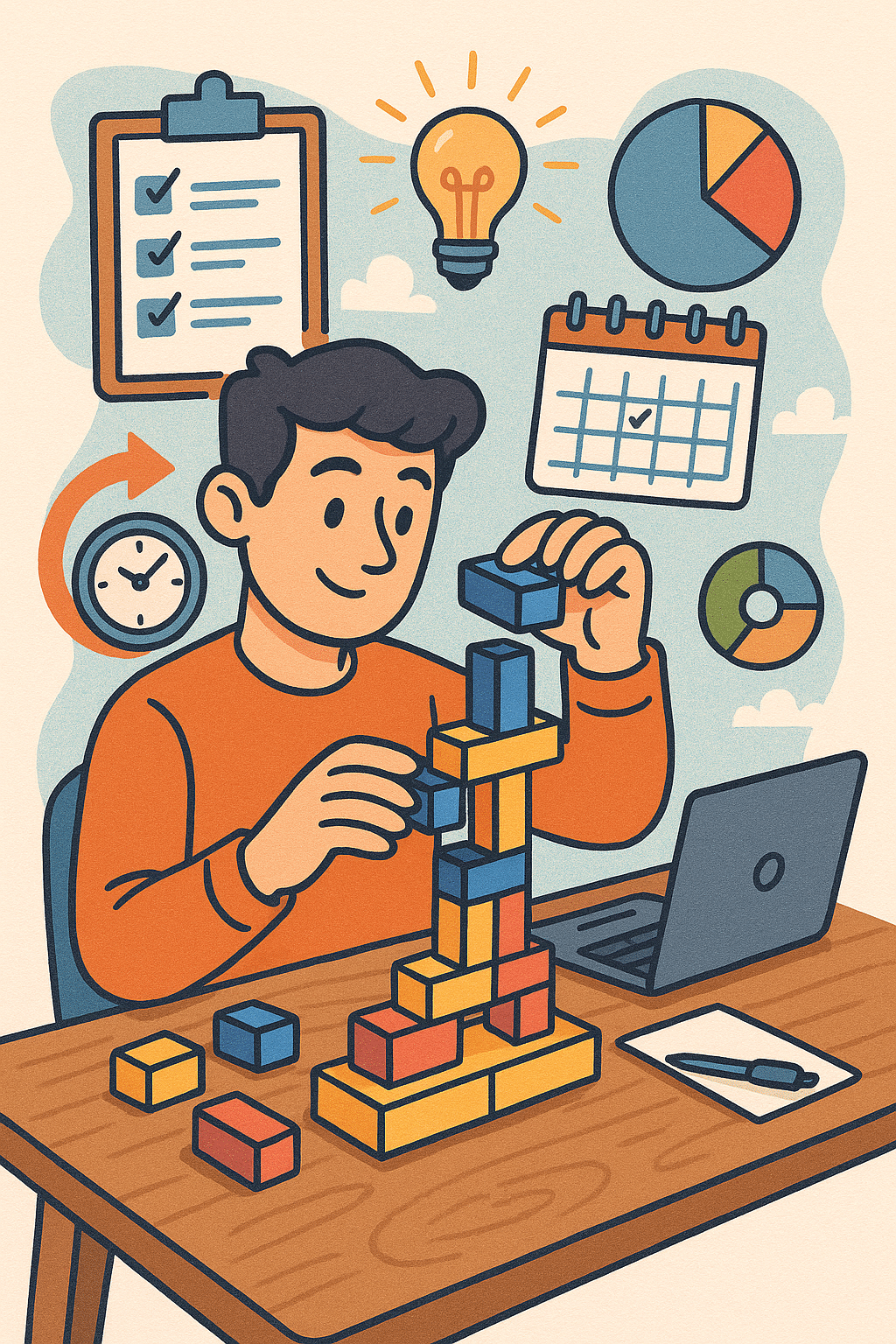Mind-wandering benefits are gaining attention again, and mind-wandering benefits is buzzing in 2025 as a key trend in cognitive science. Recent studies are uncovering how letting your thoughts drift can sharpen creativity, boost learning, and enhance problem-solving.

What Is Mind-Wandering — and Why It’s Not Just Distraction
Mind-wandering refers to unprompted shifts in attention away from the task at hand toward internal thoughts. Though traditionally seen as a failure of focus, research has reframed it as a stage in creative incubation, self-reflection, and mental rehearsal.
Mind-wandering benefits often hinge on positive constructive daydreaming, a type of internal thought linked to planning, insight, and self-awareness .
1. Boosting Creativity and Divergent Thinking
One major benefit of mind-wandering is enhanced creativity. A recent study reported a strong correlation between spontaneous mind-wandering and performance on creative tasks like the Alternative Uses Task. This supports the idea that letting thoughts flow freely fuels “aha” moments and original ideas during incubation periods .
In practical terms:
- Take a walk or shower—settings known to spark creative thoughts by blending mild engagement with mental rest.
- Use ambient noise (e.g., around 70 dB) to steady focus while allowing associative thinking—beneficial for creative solutions .
2. Enhancing Learning and Problem Solving
New insights in 2025 show that mind-wandering helps with certain types of learning, especially in low-intensity tasks. A study in Journal of Neuroscience found that while performing simple probabilistic tasks, participants who daydreamed learned just as well—or even better—than when fully focused.
Key takeaway:
- Use intentional mental breaks during repetitive or low-demand tasks—they may consolidate learning unconsciously.
3. Strengthening Self-Reflection and Future Planning
The brain’s default mode network (DMN)—associated with introspection and envisioning future scenarios—activates during mind-wandering. This network supports autobiographical memory, moral reasoning, and forecasting, underlining mind-wandering’s role in planning, empathy, and self-awareness.
Implication:
- Regular mind-wandering can enhance emotional intelligence and goal-directed thinking.
4. Cognitive Flexibility and Adaptive Thinking
Switching between focus and mental drift trains cognitive control, fostering flexibility. Perspectives suggest this shift helps older adults maintain creativity by balancing attentional engagement and internal thought.
Practically:
- Give yourself time to mind-wander between tasks or before transitions—this primes mental adaptability.
5. Mental Health and Emotional Well‑Being
Positive daydreaming can lower stress and anxiety, providing mental breaks through imaginative reflection. This helps integrative self-reflection and contributes to emotional regulation.
A Practical Guide: How to Use Mind-Wandering for Cognitive Edge
- Schedule micro-breaks
- After 25–30 minutes of focused work, step back for 3–5 minutes—walk, gaze out window, or let your mind drift.
- Use passive tasks strategically
- Reserve routine tasks such as filing or dishwashing as incubation time to spark insights.
- Introduce ambient noise
- Play low-level ambient sound (e.g., coffee shop recordings) during creative work blocks.
- Combine with mindfulness
- Practice noticing mind-wandering without judgment—this improves meta-cognitive control.
- Capture insights immediately
- Keep a notebook nearby. When ideas surface, jot them down to consolidate creative breakthroughs.
Emerging Trend of 2025: AI + Human Mind-Wandering
As AI becomes a creative partner, researchers note a “creativity gap”: human brainstorming yields richer variety than AI alone. Going forward, a hybrid model—AI for idea generation plus human mind-wandering for diversity—appears critical to unlock maximal creative potential.
Summary: Let Your Thoughts Drift
| Benefit | How It Helps |
|---|---|
| Creativity | Fuels original ideas and incubation insights |
| Learning | Unlocks subconscious learning during low-demand tasks |
| Planning & Reflection | Activates default mode network for foresight |
| Cognitive Flexibility | Trains mental-set switching |
| Emotional Well-being | Reduces stress through positive reflection |
Mind-wandering is not slacking—it’s strategic. The mind-wandering benefits trend of 2025 shows that allowing your thoughts to roam can sharpen your creativity, boost learning, and build mental resilience. Whether walking, showering, or working with AI, make space for your mind to wander—and let your brain do its best thinking in the drift.
References
Baird, B., Smallwood, J., Mrazek, M. D., Kam, J. W. Y., Franklin, M. S., & Schooler, J. W. (2012). Inspired by distraction: Mind wandering facilitates creative incubation. Psychological Science, 23(10), 1117–1122. Retrieved from https://journals.sagepub.com
Forbes. (2022). Why mind wandering can be actually good for you. Retrieved from https://www.forbes.com/sites/nomanazish/2022/04/30/why-mind-wandering-can-be-actually-good-for-you/
Study Finds. (2025). When your mind wanders, your brain might be learning better than you think. Retrieved from https://studyfinds.org/daydreaming‑mind‑wanders‑your‑brain‑might‑be‑learning‑better‑than‑you‑think/






